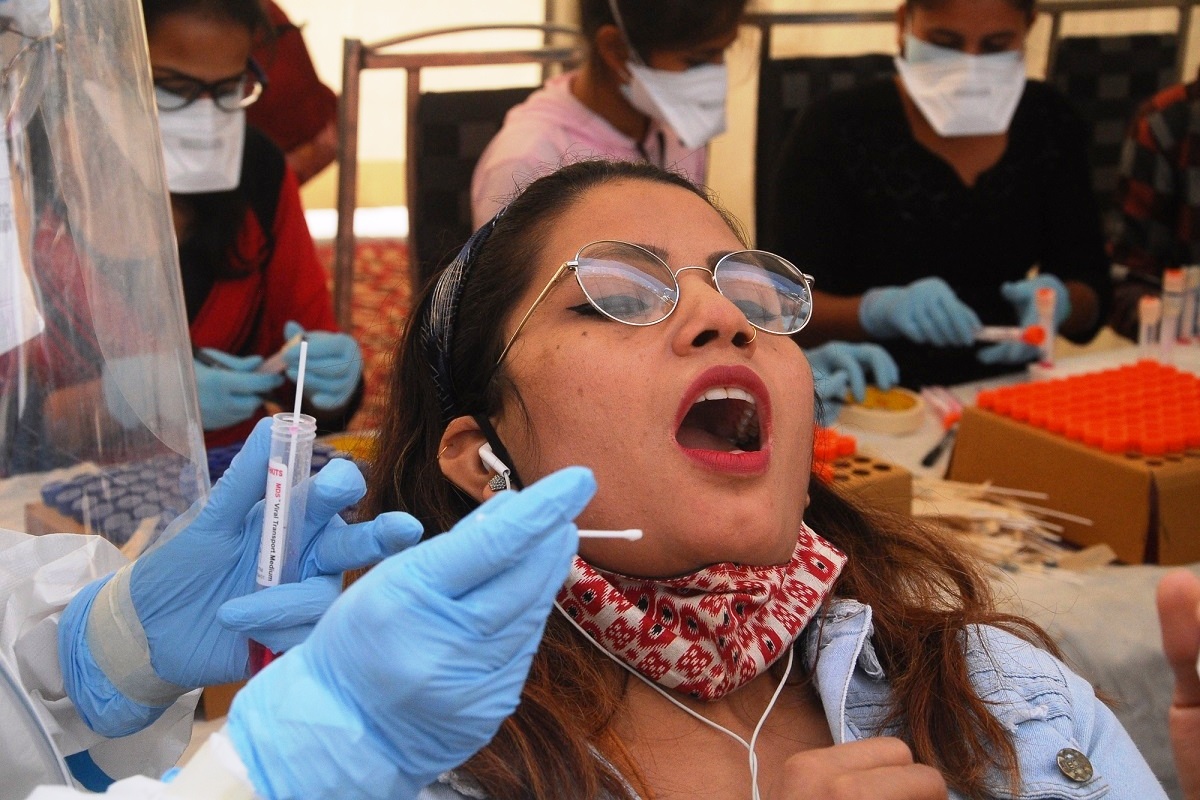Battle in Kerala
With all 20 Lok Sabha seats in Kerala at stake in the second phase of polling tomorrow, the electoral drama unfolds with its usual intensity, underscoring the unique political landscape of the state.
But the latest spike in cases in seven states of the country has raised the concern among experts that the two new mutant variations of the virus, which have been detected in Kerala, Maharashtra and Telengana, may lead to a fresh wave of the pandemic in the country, which had seen a substantial slowdown of the spread of the coronavirus between September and January.

(Photo: IANS)
Contrary to the early modeling, which had predicted millions of deaths due to Covid- 19, the sharp decline in coronavirus cases from September 17 last year till the last week in India had been dramatic and had perplexed many.
But the latest spike in cases in seven states of the country has raised the concern among experts that the two new mutant variations of the virus, which have been detected in Kerala, Maharashtra and Telengana, may lead to a fresh wave of the pandemic in the country, which had seen a substantial slowdown of the spread of the coronavirus between September and January.
A senior professor of the Department of Biotechnology, University of North Bengal, Dr Ranadhir Chakraborty, who was part of an international team which mapped the genomes of the virus till August 2020, said that since the virus was mutating, the threat of increase in new strain infections loomed large. “The new and frequent mutations at the receptor binding domain in the coronavirus spike proteins have increased the infectivity of the virus. In the UK and South African strains, one and three mutations respectively, had taken place in the receptor binding domain, that is, between amino acids 319 and 541 in the spike protein. In the two new strains, which have been detected in Kerala and Maharashtra, namely N440K and E484K, two new mutations are evident. In N440K, Asparagine has changed into Lysine and in E484K, Glutamic has changed into Lysine,” he said.
Advertisement
Dr Chakraborty held that unlike in the period between March 2020 and September 2020, when people mostly above the age of 50 were getting infected with the deadly virus, more children and youngsters got the infection in the period between October 2020 and January 2020. “The shift in infection to lower age-groups has been mainly because of the increased binding between the spike protein and the angiotensin-converting enzyme 2, or ACE2 “receptors,” present in the human organs. The binding efficiency is more among children and more ACE-2 are present among people aged between 24 and 50. As a result, ACE-2 is providing the entry point for the coronavirus to hook into and infect a wide range of human cells, which has increased the fear of a second wave being more virulent,” he said.
Renowned surgeon of Siliguri, Dr Kaushik Bhattacharya, who agreed with Dr Chakraborty, flagged concerns over the “new Indian strains” of Covid-19 and said it could be more “infectious and dangerous.”
Advertisement